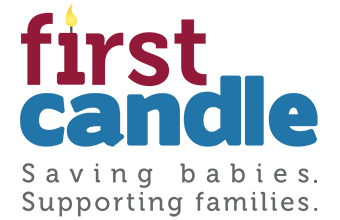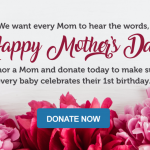Baby Boxes – What Parents Must Know

Baby Boxes – courtesy of ALAMY
Baby Boxes, free sturdy boxes with a firm mattress, a waterproof cover and a fitted sheet, are being provided to new parents in an effort to reduce infant mortality rates nationwide. These boxes are intended to serve as a safe sleep area when a traditional and recommended sleep area is not available to the parents. As the leading non-profit organization dedicated to the elimination of Sudden Infant Death Syndrome (SIDS) and Sudden Unexpected Infant Death (SUID), CJ First Candle applauds all initiatives designed to improve the chances that babies will be placed in a safe sleep environment. However, it’s important that parents recognize Baby Boxes should not be a first choice for a baby’s sleep environment but more so when no other options are available.
While parents must watch a program lasting 10 to 15 minutes and take a short quiz to get a certificate of completion, there is a risk that the Baby Box may still be used in unsafe ways. The following are some things to note if you or someone you know might be considering using a Baby Box:
- There is a potential suffocation hazard if the baby rolls into the side of thebox.
- Placing baby on the floor may cause a tripping hazard posing a danger of someone falling on top of the baby.
- Pets can easily get into the box and rodents and roaches are attracted to cardboard.
- Parents may decide to place the box on an unstable surface such as a dresser, counter or couch.
Alison Jacobson, CEO of CJ First Candle, feels it’s imperative that parents understand the inherent risks associated with using the Baby Box and use it as “last resort” for a baby’s sleep environment. “Undoubtedly the most important thing is what is actually in your baby’s sleep environment. Whether it’s a crib, play yard, bassinet, Baby Box or dresser drawer the key is eliminating all fluffy bedding, pillows, blankets, stuffed animals or extra padding.”
As per the American Academy of Pediatrics’ parents should follow these guidelines to reduce the risk of SIDS:
1. Place infants on their back to sleep (supine) for every sleep period until they are 1 year of age. This position does not increase the risk of choking and aspiration.
2. Use a firm sleep surface.
3. Breastfeed, if possible.
4. Place infants to sleep in the same room where you sleep. Infants should sleep close to the parents’ bed but on a separate sleep surface designed for infants, ideally for the first year, but at least for the first six months.
5. Keep soft objects and loose bedding out of the infant’s sleep area.
6. Consider offering a pacifier (after breastfeeding has been firmly established) at naptime and bedtime.
7. Avoid smoke exposure during pregnancy and after birth.
8. Avoid alcohol and illicit drug (even over the counter cold medicines that make you sleepy) use during pregnancy and after birth.
9. Avoid overheating and head covering in infants.
Please note that the American Academy of Pediatric Task Force on SIDS does not believe that there is yet enough evidence to say anything about the potential benefits or dangers of using baby boxes, wahakuras, or pepi-pods. In reference to Finland, researchers have never studied the baby box there, and although their infant mortality rate is lower than some other industrialized countries, there are many other reasons for their low infant mortality rates. It is also important to note that all industrialized countries have shown similar dramatic falls in infant mortality over the 20th century for numerous reasons, including improved nutrition, sanitation, immunizations, antibiotics, perinatology, and intensive care nurseries.
For more information, visit www.cjfirstcandle.org or refer to the American Academy of Pediatrics 2016 safe sleep guidelines.




